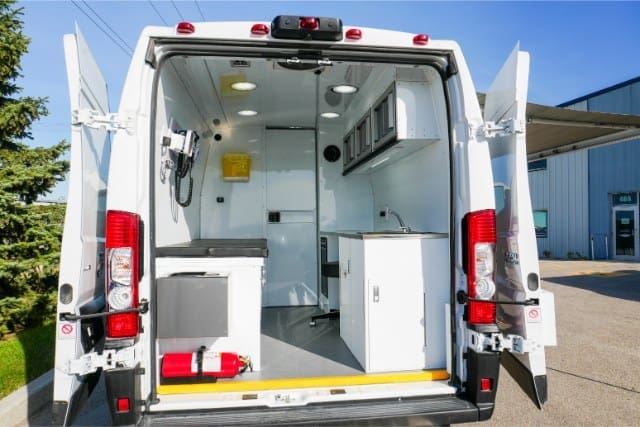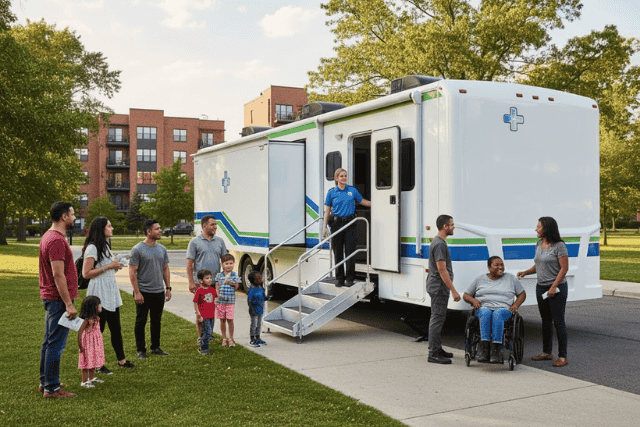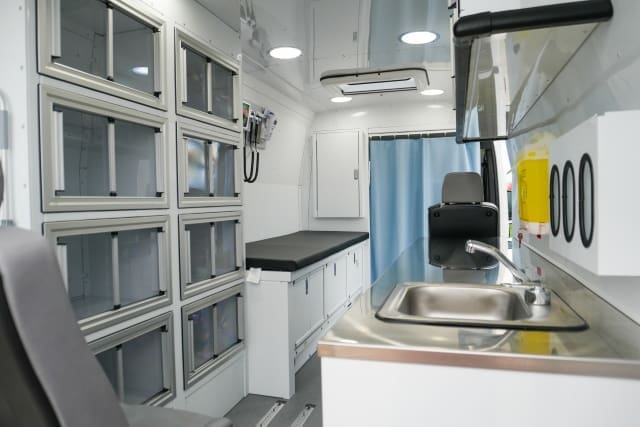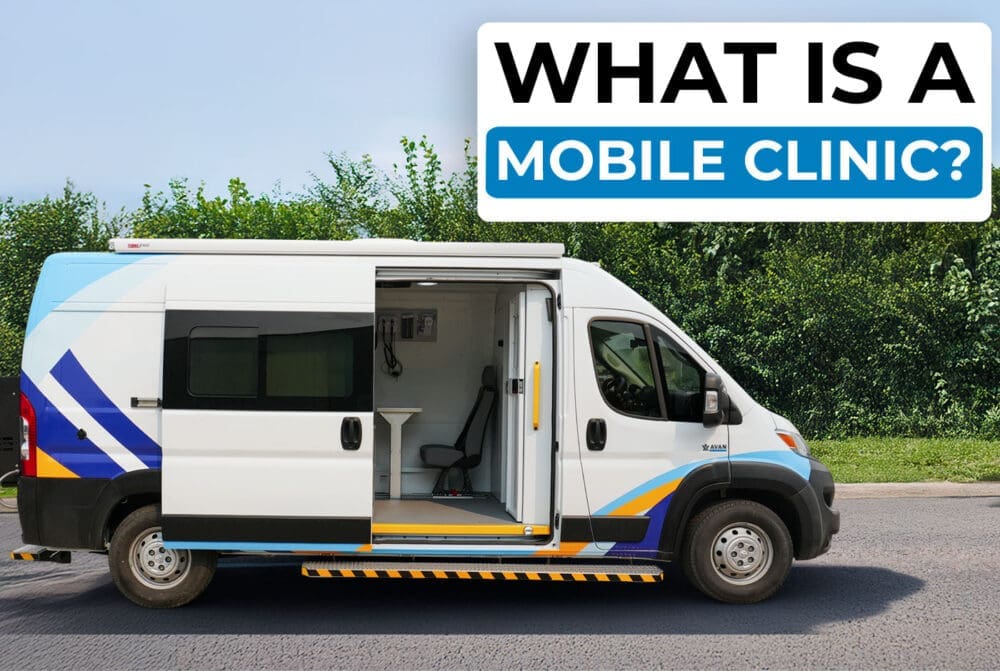can useAre gaps in preventive healthcare stopping people in your community from getting the care they need? If you’re part of an organization trying to help, you’ve probably seen this happen. People miss check-ups, skip important screenings, or avoid healthcare because they can’t get to a fixed clinic. These gaps in preventive healthcare cause bigger problems, like crowded emergency rooms, higher medical bills, and worse health for the whole community.
You might feel frustrated, wondering how to help people before small health problems turn into big ones. It’s hard when things like distance, money, or lack of clinics get in the way of providing preventive healthcare. And if these gaps don’t get fixed, the problems just get worse:
- More sickness: Health problems that could’ve been caught early are missed.
- Higher costs: Emergency room visits cost a lot for both patients and providers.
- Poorer health: Without regular care, people’s health goes downhill.
At AVAN Mobility, we understand these challenges. We’ve worked with groups like the Community Clinic of Southwest Missouri to build mobile medical units that bring care straight to the people who need it. Our goal is to close gaps in preventive healthcare and help save lives. While we know we’re not the only company out there, we’ve helped organizations across the country remove barriers to care.
In this article, we’ll discuss the top five gaps in preventive healthcare and how fixing them can make a big difference in your community.
5 gaps in preventive healthcare you should know about
Let’s take a look at some of the most common gaps in preventive healthcare, which all starts with accessibility.
1. Limited access to healthcare in rural and underserved areas
One of the biggest gaps in preventive healthcare is that many people can’t easily get to a doctor because there are simply none nearby. If you work with communities in rural areas, you’ve probably seen this problem up close. People live hours away from clinics or hospitals, and traveling a long way for a simple check-up or screening isn’t always possible. When this happens, small health problems don’t get caught early and turn into bigger, more serious issues.
How does this gap hurt people?
Missed health problems: Things like high blood pressure, diabetes, or cancer aren’t found early.
More ER visits: Without regular care, people end up in the emergency room for problems that could’ve been prevented.
Worse health overall: People in rural areas often get sick more and don’t live as long because they can’t get the care they need.
In the U.S., about 1 in 5 people live in rural areas, but only 10% of doctors work there. That’s a big problem. It’s not just the distance—many rural places don’t have enough doctors, clinics, or even ways to get to appointments. All of this makes it hard for people to get preventive healthcare and stay healthy.
2. Lack of health education and awareness
Another big gap in preventive healthcare is that many people don’t know how or when to get the care they need. Even if healthcare is available, people might not understand why regular check-ups and screenings are important. They might not know the signs of common health problems or when to see a doctor. This lack of health education and awareness can lead to serious issues being missed until it’s too late.
How does this gap affect people?
Skipping check-ups: Many people don’t realize they need regular visits, even if they feel fine.
Ignoring symptoms: Without knowing the warning signs, people might brush off symptoms of serious conditions like heart disease or cancer.
Unhealthy habits: Without proper education, people may continue smoking, eating unhealthy foods, or avoiding exercise, increasing their risk of illness.
According to the Centers for Disease Control and Prevention (CDC), nearly 9 out of 10 adults in the U.S. struggle to understand and use health information effectively. This is called low health literacy, and it’s a major barrier to preventive healthcare. When people don’t have clear, simple information about their health, they’re less likely to take steps to stay healthy.
3. Financial barriers to preventive healthcare
The third major gap in preventive healthcare is the cost. Even when people know they need check-ups or screenings, they might skip them because they can’t afford the care. High costs for doctor visits, tests, or even health insurance make it hard for many families to get the preventive healthcare they need.
How does this gap affect people?
Skipping care due to cost: Many people avoid seeing a doctor because they worry about the bill.
Delaying important screenings: Tests like mammograms or blood work can be expensive, so people put them off.
Relying on emergency care: When small health problems aren’t caught early, they turn into big issues that require costly ER visits.
In the U.S., about 1 in 4 adults say they or someone in their family skipped needed medical care in the past year because of the cost, according to a KFF Health Tracking Poll. Even with insurance, high deductibles and out-of-pocket costs can make preventive healthcare feel out of reach. This financial strain keeps people from getting the care they need to stay healthy.
4. Shortage of healthcare providers
Fourthly, there is a shortage of doctors and healthcare providers in many parts of the U.S. Even in places where clinics exist, there might not be enough staff to meet the community’s needs. Long wait times, overbooked schedules, and provider burnout make it hard for people to get regular check-ups and screenings.
How does this gap affect people?
Long wait times: People wait weeks or even months for appointments, causing delays in preventive care.
Rushed appointments: When doctors are overbooked, visits feel quick and less thorough, leading to missed health issues.
Fewer specialists: In some areas, it’s hard to find doctors who specialize in specific preventive care, such as cancer screenings or heart health.
According to the Association of American Medical Colleges (AAMC), the U.S. will face a projected shortage of up to 124,000 doctors by 2034. Rural and underserved areas are hardest hit, but even cities are feeling the strain. This shortage means fewer chances for people to get the preventive healthcare they need, increasing the risk of undiagnosed health problems.
5. Transportation barriers to accessing preventive healthcare
Getting to the doctor isn’t always easy, and that’s a big gap in preventive healthcare. Even when clinics and doctors are nearby, many people don’t have a way to get there. Some don’t own a car, can’t drive, or live in places without buses or public transportation. This makes it really hard to get regular check-ups or screenings.
How does this gap hurt people?
Missed appointments: Without a ride, people skip doctor visits, even when they need preventive care.
Delays in care: When it’s tough to get to the doctor, people wait until they’re really sick to go.
No options in rural areas: In small towns or remote areas, public transportation might not exist at all.
There are about 3.6 million people in the U.S. who miss medical appointments every year because they don’t have transportation, according to the National Conference of State Legislatures (NCSL). This problem is even bigger for people in rural areas, older adults, and those with disabilities. When people can’t get to the doctor, they miss out on preventive healthcare, and small health problems turn into big ones.
What’s the solution to these gaps in preventive healthcare?
There are a few ways to fix the gaps in preventive healthcare, but one really strong solution is mobile medical clinics. These are like doctor’s offices on wheels that bring healthcare right to where people live. Instead of making people travel far to see a doctor, the clinic comes to them. This helps solve a lot of the problems we talked about earlier.
How do mobile medical units help?
They bring care to remote areas: People who live far from a doctor can get check-ups and screenings without spending hours driving.
Health education: Your healthcare team can help people understand why regular check-ups matter and how to spot health problems early.
They offer affordable care: Many mobile clinics work with programs to give free or low-cost care to people who need it.
They fix transportation problems: Since the clinic comes to different neighborhoods, people don’t have to worry about finding a ride.
Mobile medical units aren’t the only way to close gaps in preventive healthcare, but they’re a great option. They make it easier for people to get the care they need, no matter where they live.
Ready to close the gaps in preventive healthcare? Here’s your next step
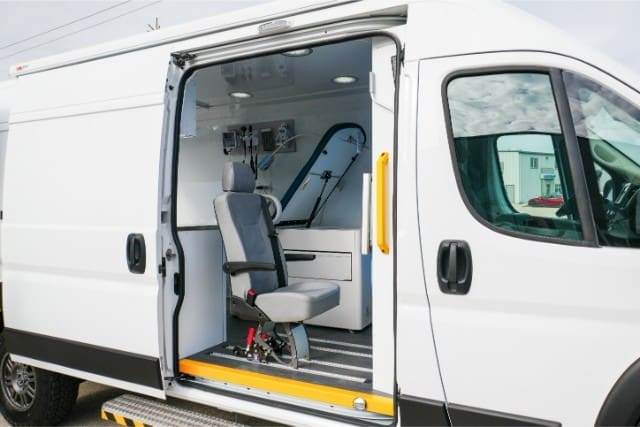
You’re here because you’ve seen how hard it can be for people to get the preventive healthcare they need. Maybe it’s because they live far from a doctor, can’t afford check-ups, or don’t have a way to get to appointments. These gaps are hurting your community, and you’re looking for ways to fix them.
Here’s what you’ve learned:
- The top 5 gaps in preventive healthcare are limited access, lack of health education, high costs, doctor shortages, and transportation problems.
- Mobile medical clinics are a strong way to solve these problems by bringing healthcare straight to the people who need it.
At AVAN Mobility, we understand how tough it is to close these gaps. We’ve worked with dozens of organizations across the U.S., and we know how to help you overcome the same challenges.
But we’re more than just a company that makes vehicles—we care about helping communities get healthier and saving lives. If you have questions or want to learn more, click the button below to talk to one of our mobility experts. We’re here to help.
If you’re not ready to talk to a mobility expert yet, we’ve got a few other resources you can check out to learn more. The five-part series on mobile clinics will teach you everything you need to know about these vehicles to get started in the right direction.
- Part 1: What Is the Purpose of a Mobile Clinic?
- Part 2: How Do Mobile Clinics Bridge the Gap in Rural and Urban Healthcare?
- Part 3: What Are the Different Types of Mobile Clinics?
- Part 4: What Customizations Are Possible With a Mobile Clinic?
- Part 5: What Is the Cost of a Mobile Clinic and How Do You Get Started?
FAQs about preventive healthcare
Q: What is preventive healthcare?
A: Preventive healthcare is regular check-ups, screenings, and tests that help find health problems early before they get serious.
Q: Does preventive care reduce healthcare costs?
A: Yes, preventive care can lower healthcare costs by catching problems early, so they don’t turn into expensive emergencies.
Q: How does preventive care reduce healthcare costs?
A: Preventive care reduces healthcare costs by addressing conditions like high blood pressure early, avoiding expensive emergencies such as heart attacks or strokes that require costly hospitalizations and long-term care.
Q: What are preventive services in healthcare?
A: Preventive services include things like vaccinations, blood pressure checks, and routine health screenings to keep you healthy.
